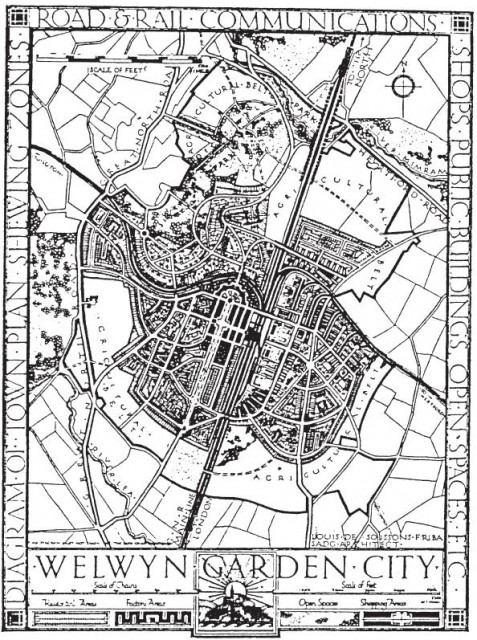First Experiments
Netherlands: Struggle against the Sea
Due to the exiguity of their territory (now 34 000 km2 for 16 million inhabitants) and to the permanent menace of maritime invasions (a large part of the territory is below sea level), Netherlands had a practice of territorial development of polders since the twelfth century, before the term existed. This country, which has been the first to make compulsory the establishment of plans for towns (act of 1901), has initiated a policy of planning of its major metropolis; their municipalities acquiring an actual monopoly on building land, in particular, in the case of Amsterdam with the developments prepared by Berlage and Van Eesteren (plan of 1936).
Soviet Union: Equilibrium West–East
Around 1930, after a decade of ideological debate, the Soviet Union set up a policy of rigid economic planning (quinquennial plans) and the spatial translation of these plans (distribution of activities, in particular of manufacturing large plants, infrastructures, housing, and public amenities). The policy of economic planning has been associated with a policy of territorial planning in order to reduce disparities between the European and Asian parts of the Union. Indeed, in the first one were concentrated three quarters of the population and 80% of the agricultural and industrial production; while, the second represented three quarters of the territory, 80% of raw material and of hydroelectrical potential, 90% of the coal reserves, etc. It was decided to create highcapacity infrastructures west to east (railways and pipelines), but as well, to found, close to resources of raw material in Siberia and Central Asia, manufacturing complexes and, for this purpose, about 1000 of new towns.
Italy: Equilibrium North–South
At a different scale, Italy had to face development disparities between the northern part, rich and industrialized, and the southern one (Mezzogiorno), poor and essentially agricultural, due to geographical, historic, and social reasons (the south being dominated by an oligarchy of landowners and by a criminal organization). The gap, in terms of income, was from one to two. The result was an intense migration from south to north.
The Mussolini government had initiated a policy of financial subsidies to reduce this gap. But he did not try to transform the economical and social structures.
It was only during the 1950s that the Cassa per il Mezzogiorn was created to undertake a land reform, to create infrastructures, and to develop manufacturing activity. Despite the money engaged, an important gap is still remaining.
Britain: Decentralization
After Ebenezer Howard had written a book in 1898 proposing 'garden cities' to avoid huge metropolitan development, Letchworth (from 1903) andWelwyn (from 1919) were built in the north of London (Figure 1).

During the 1930s, before other European countries, Britain, where industrialization had been more precocious, felt the first signs of the aging of traditional industry (metallurgy, mechanics, and textile) and, during the great economic crisis, the rise of underemployment. The Special Areas Act was voted. It delivered public funds to create industrial estates and to build factories ready to let.
In 1937, it decided to prepare a national territorial plan (the Barlow Report, published in 1940), which advocated for activities of decentralization from London region to 'development areas', created in 1945. Consequently, a Greater London Plan (Abercrombie Plan, 1944) was prepared for the London region. This plan has been the origin of the policy of activities overspill from central London to the outer part of the conurbation and of the construction of 'new towns' and 'expanding towns'.
- Which Scientific Status for Territorial Development?
- What Is Amenagement du Territoire or Territorial Development?
- Amenagement du Territoire: Territorial Development
- Critical Contemporary Aid Debates
- Humanitarian Aid
- Aid Conditionality
- Changing Trends in Development Aid
- Reasons for Giving Aid
- Different Types of Aid